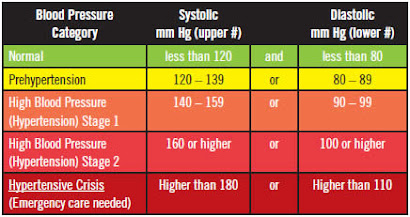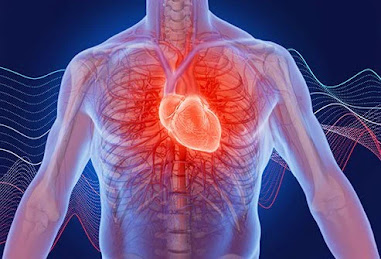What is a normal blood pressure reading?
What is circulatory strain?
Pulse is the power that moves blood through the circulatory framework. It is a significant power since oxygen and supplements wouldn't be pushed around the circulatory framework to feed tissues and organs without pulse.
Pulse is likewise indispensable on the grounds that it conveys white platelets and antibodies for invulnerability and chemicals like insulin.
Similarly as significant as giving oxygen and supplements, the new blood that gets conveyed can get the harmful material results of digestion, including the carbon dioxide we breathe out with each breath and the poisons we clear through the liver and kidneys.
Blood itself conveys various different properties, including its temperature. It additionally conveys one of the safeguards against tissue harm, the thickening platelets that forestall blood misfortune following injury.
However, what precisely purposes blood to apply tension in the conduits? Some portion of the response is basic — the heart makes pulse by driving out blood when it contracts with each heartbeat. Pulse, nonetheless, can't be made exclusively by a siphoning heart.
Scopes of typical pulse readings
The National Institutes of HealthTrusted Source and the American Heart Association (AHA)Trusted Source refer to ordinary pulse to be under 120 mm Hg systolic and 80 mm Hg diastolic. Be that as it may, circulatory strain changes normally for some reasons.
More established 2003 guidelinesTrusted Source express that for blood pressures over a figure of 115/75 mm Hg, each ascent of 20/10 mm Hg copies the gamble of cardiovascular infection.
The general rules for hypertension got an updateTrusted Source in November 2017. They take into account prior intercession.
Beginning around 2017, the AHA has exhorted that individuals with hypertension ought to get treatment at 130/80 mm Hg as opposed to 140/90 mm Hg.
They additionally eliminated the "prehypertension" classification between 120-139/80-89 mm Hg. A pulse perusing of 140/90 mm Hg presently qualifies as stage II hypertension and not stage I, as it used to be.
This classification presently frames two separate reaches:
- raised circulatory strain, from 120-129/under 80 mm Hg
- stage I hypertension, from 130-139/80-89 mm Hg
The capability of pulse in the body
Course is like an exceptionally refined type of plumbing — blood has "stream," and corridors are "pipes." An essential law of physical science leads to blood stream, and this regulation additionally applies in a nursery hose pipe.
Blood courses through the body as a result of a distinction in pressure.
Pulse is most noteworthy toward the beginning of its excursion from the heart — when it enters the aorta — and it is least toward the finish of its excursion along dynamically more modest parts of corridors. That pressure distinction makes blood stream.
Courses influence circulatory strain likewise to the actual properties of a nursery hose pipe influencing water pressure. Tightening the line increments tension at the mark of choking.
Without the versatile idea of the conduit walls, for instance, the strain of the blood would fall away more rapidly as it is siphoned from the heart.
While the heart makes the most extreme strain, the properties of the conduits are similarly as vital to keeping up with it and permitting blood to stream all through the body.
The state of the corridors influences circulatory strain and stream, and limiting of the veins can ultimately obstruct the inventory by and large, prompting hazardous circumstances including stroke and cardiovascular failure.
Pulse estimation
The gadget used to gauge pulse is a sphygmomanometer. It comprises of an elastic armband — the sleeve that is expanded manually or machine siphon.
When the sleeve is sufficiently expanded to stop the beat, a perusing is taken either electronically or on a simple dial.
The perusing is communicated as far as the strain it takes to move mercury around a cylinder against gravity. This is the justification for pressure being estimated utilizing the unit millimeters of mercury, shortened to mm Hg.
Estimating pulse commonly causes no aggravation or inconvenience. Nonetheless, it can briefly feel tight around the arm.
Circulatory strain readings
A stethoscope recognizes the exact moment that the beat sound returns, and the tension of the sleeve is gradually delivered. Utilizing the stethoscope empowers the individual estimating the circulatory strain to tune in out for two explicit places.
Pulse readings comprise of two figures: The systolic strain first and the diastolic tension second. The perusing is given as, for instance, 140 north of 90 mm Hg.
The systolic strain is the higher figure brought about by the heart's withdrawal, while the diastolic number is the lower tension in the conduits during the brief "resting" period between pulses.
Ways to forestall hypertension
The AHATrusted Source list the accompanying estimates patients can take to assist with keeping a solid pulse:
- Keep a solid body weight in light of a specialist's suggestion.
- Eat a fair eating routine wealthy in leafy foods.
- Eliminate sodium, or salt, in the eating regimen.
- Routinely participate in actual work, like lively strolling, for no less than 30 minutes per day, most days of the week, if conceivable.
- Oversee pressure.
- Moderate liquor admission. Men ought to drink less than two cocktails every day. Ladies and men with a lower body weight ought to polish off a limit of one cocktail daily.
- Stop smoking.
- Work with a specialist to appropriately deal with all remedies.
- Making these strides can decrease the gamble of medical conditions sometime later.
Low pulse concerns
Low pulse, or hypotension, isn't normally essentially as troubling as hypertension. Nonetheless, it can in any case show medical problems.
An individual with a circulatory strain perusing of under 90/60 mm HgTrusted Source is considered to have low pulse. The AHATrusted Source has expressed that specialists don't ordinarily look at this as an issue except if different side effects exist close by it.
These hidden issues could incorporate interior dying, coronary illness, pregnancy, a few drugs, among different circumstances.
On the off chance that an individual encounters different side effects, they ought to talk with their primary care physician to address any fundamental circumstances.
Action item
Pulse is fundamental for the body. Be that as it may, it can turn out to be excessively high or excessively low. A circulatory strain perusing that is too high is called hypertension, or hypertension. This can cause various medical problems and ought to be checked with a specialist.
Hypertension can be made due, particularly with early mediation and some way of life changes.




Comments
Post a Comment